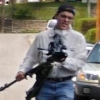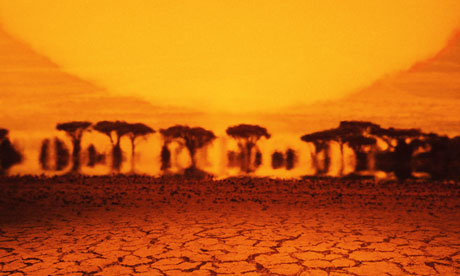Search the Community
Showing results for tags 'composition'.
-
I recently saw the 2021 PBS Frontline documentary "Boeing's Fatal Flaw": https://www.pbs.org/wgbh/frontline/film/boeings-fatal-flaw/ For many interviews they used negative look space on the 2nd camera. I was always taught this was wrong and to my eyes it looks abnormal. Is this some new accepted technique? Example frames Below. The DP was Jeremy Gould: https://m.imdb.com/name/nm1020495/filmotype/cinematographer?ref_=m_nmfm_4 Example frames: https://joema.smugmug.com/PBS-Boeing-Documentary-Interview-Composition/n-ZSD25f/
- 1 reply
-
- 1
-

-
- documentary
- interview
-
(and 1 more)
Tagged with:
-
An interesting Composition discussion/debate
Anne Bauchens posted a topic in Camera Operating & Gear
Good day all, I've came across this discussion on the subject, i thought it may open a conversation here, they cover many angle(theories, application, history, narrative, misconceptions...etc). -
I am obsessed with books, I can read all day. I am looking to improve my directing in terms of: directing talent, shot composition, etiquette with major crew members, and script analyzation. I know most of these are picked up by doing, but are there any books that you recommend that cover any of these topics? I've already read : The Filmmaker's intuition, directing shot by shot, and The Hero With a Thousand Faces. Thank you!
-
newbie question perhaps. just watching The company you keep, frame right side around 1:54:20. whats up with the bench cutoff?.
-
Dear Cinematography Community, Was hoping to get some good feedback on the style of shooting and feedback on the cuts. Please let me know your thoughts, as I am trying to pitch this new concept to the general public. I shot and cut this for a motion picture composer and want to make sure it has a cinematic feel: Thank you, Shaun Khan Aim Higher http://www.fd1.com
-
- Aerial Cinematography
- Cinematography
- (and 3 more)
-
Hi all, Hope you are all well. It would be great to get some feedback on my reel. Any comments are welcome. Cinematography Reel https://vimeo.com/115711277 Kind Regards,
- 1 reply
-
- lighting
- composition
-
(and 6 more)
Tagged with:
-
Hello there, I am new to this forum so hope everyone is okay. I am in my final year at university and my topic of focus is Cinematography. More in depth my focus is Cinematography: How framing and composition can convey a narrative/emotion. I have been doing some research into different styles of art and photography express emotion and their techniques to draw an audience into their work. For example I have been looking into the work of expressionist art work, moving on then into German expressionism which then led to Film Noir (that's all i have got so far in my research). I also have my personal favorite films/tv programs which inspire me with their visual styles and just the general way they shoot. These consist of BBC's Luther, Channel 4's Utopia, La Haine, Lost in Translation, BBC's Sherlock, Ginger and Rosa and The Road. I basically want to open a discussion looking at this topic and get personal opinion off of other cinematographers and just people interested in visual elements. For example, does breaking the rules of composition help create a distorted image, and does that show a characters emotion at that point in time? I shot some rough tests on a C100 looking a lot at how the camera operates etc but also different styles of framing that i have seen on programs and films before. Please check this out and leave me feedback on what you felt the framing gave to the scene and if it worked, if it didnt, or just a general comment (leave it on vimeo if you want). Many Thanks, Look forward to hearing from people. Here is the link: https://vimeo.com/81618367
- 8 replies
-
- framing
- composition
-
(and 2 more)
Tagged with:
-
Part of the script entails the concept of a madness, that lies within the jungle. Within context, the jungle appears extremely hot. What I'm trying to achieve is to film the jungle from the outside looking in, and I'm hoping to have a mirage, or a refractive heat wave, bouncing from off the ground up. Attached photo is basically what i mean. Does anyone have experience in filming this type of image? I get the basic concepts of a mirage, but I want to be sure of how to go about capturing this before I get to set. Thanks,
-
Hey folks, Newbie, and enjoying the wealth of info here. I'm wondering if you can tell me what you look for when you're licensing music for your projects. I'm a professional music producer now for about 15 years, but only recently getting into music for film/tv/ads. I have 2 separate projects going at the moment. I am working on a portfolio of music for license, and/or to represent my abilities for bespoke projects over here: https://soundcloud.com/whitesploits I am also uploading corporate motivational type stuff for the Royalty Free site AudioJungle over here: http://tinyurl.com/secretpony (decided to use a pseudonym to avoid confusion between the 2 projects) Both projects are only about a month old, but so far so good. The SoundCloud (more varied and in depth music) has gotten good response but I haven't felt ready to pitch it to libraries and production houses quite yet. The Royalty Free site is seeing a few sales per upload, which is good for a young account. I want to find out what sort of attributes you look for so I can take this into account as I compose for these 2 projects. I'm sure there are a million different approaches and types of usage that video producers work with, but I'm also sure there are many things I can think about at this stage. I want to develop my skills in a valuable way... Thanks so much for your input, -EW
- 8 replies
-
- music
- composition
-
(and 2 more)
Tagged with:
-
Can you think of any colour movies with an upright piano in, grand pianos are much easier to film because you can shoot the face over the top of the piano. The ones that immediately spring to mind are: Shine The pianist The legend of 1900 Can you think of anymore?
- 1 reply
-
- upright piano
- piano
-
(and 2 more)
Tagged with:
-
After a summer of not doing much but making lattes for Hollywood folks and making a short film that I ended up not finishing, I feel behind as a student filmmaker. Are there any simple but effective practices that a person with a camera can get in the habit of to improve their skills? Skills such as: framing, camera movement, lighting, and composition. An example I heard of was to film ten second clips displaying dramatic light changes ie: striking a match in a dark room. I hope many can chime in on this!
-
Translating storyboard images or shot-lists into actual shooting is a creative process, with all the variables that entails. Creating a working flow from juxtapositions in the editing room requires one to work from the footage in hand. In my admittedly limited experience in taking video from start to finish, I have found that what I had hoped would cut well from a medium to close-up, often suffers a compositional awkwardness as a result of secondary elements in one or the other shot. For instance, even if both backgrounds have a soft, similar diagonal pattern, the cut from one shot to the next seems less smooth than pre-visualized, due to the displacement of the visual elements from one to the next. (I leave aside, in this consideration, cuts for which a high-precision match involves lining up a transparent template on the monitor for framing the second shot to work with the first.) Even with Walter Murch’s six-element priority list in mind, I wonder if anyone would care to comment on this issue, approaches to filming adn editing, the role of experience, or other observations or advice.
- 1 reply
-
- shooting
- composition
-
(and 1 more)
Tagged with:







